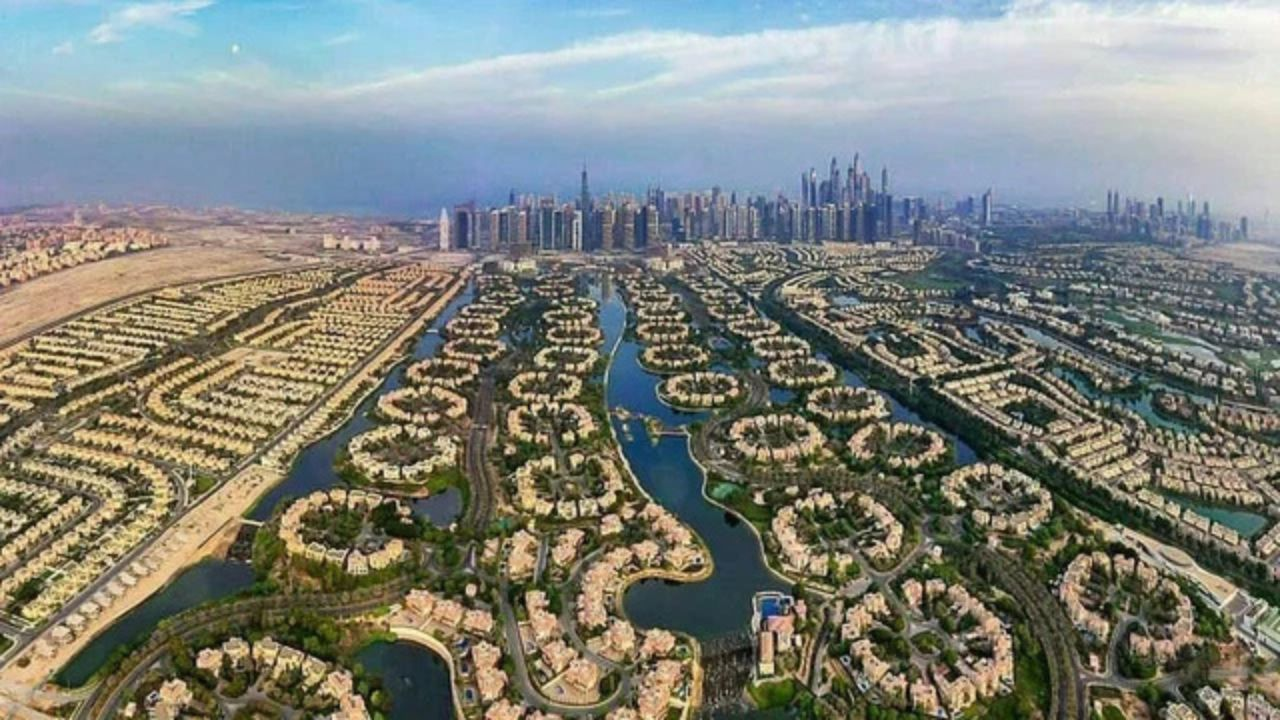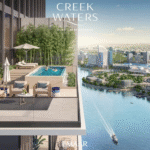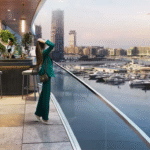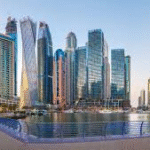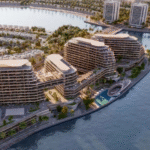Now Reading: Island vs Mainland Property in Dubai: Pros and Cons 2025
-
01
Island vs Mainland Property in Dubai: Pros and Cons 2025
Island vs Mainland Property in Dubai: Pros and Cons 2025
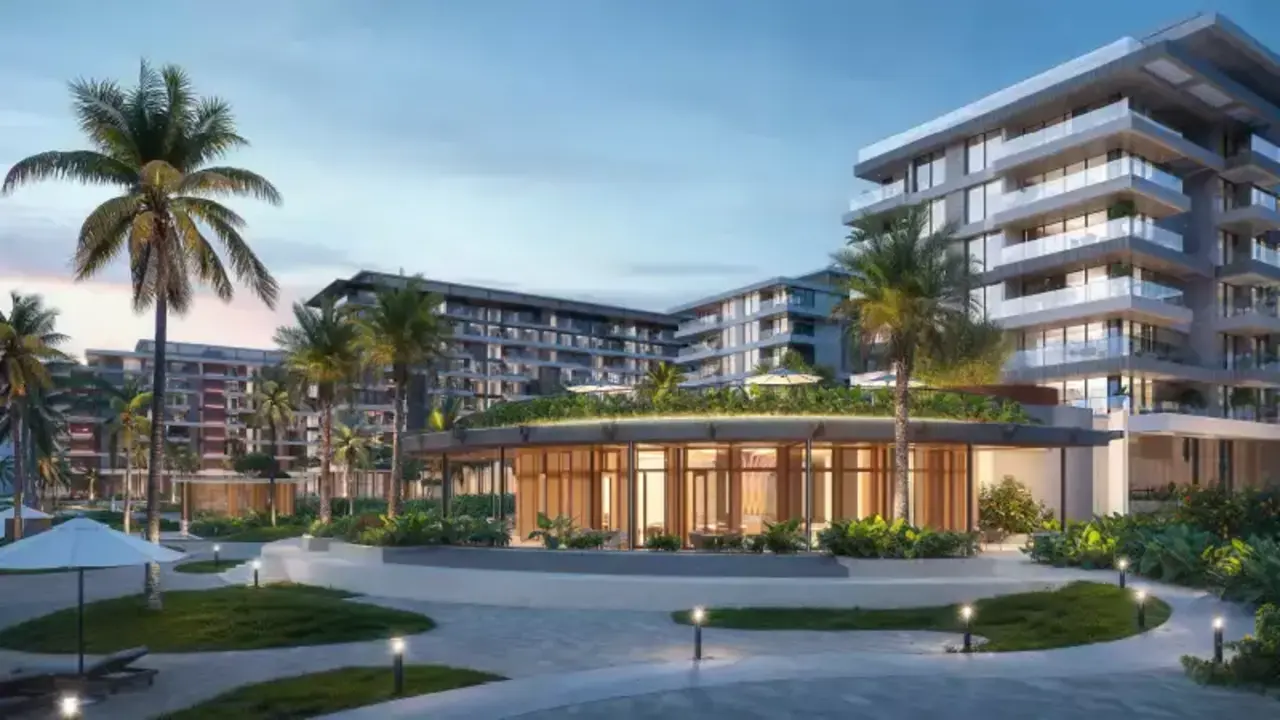
Table of Contents
Picture yourself choosing between a serene island villa with waves lapping at your doorstep or a vibrant mainland home close to Dubai’s bustling heart, each with its own promise of wealth and lifestyle. In 2025, Dubai’s real estate market is thriving, with 96,000 transactions worth $87 billion in the first half, 58% driven by buyers from the UK, India, Russia, and China. Island properties like Palm Jumeirah, Bluewaters Island, and Dubai Islands, and mainland projects like Dubai Hills Estate, Jumeirah Village Circle (JVC), and Dubai South, offer 100% freehold ownership, a dirham pegged to the U.S. dollar, and no personal income tax, capital gains tax, or annual property taxes.
Delivering 6-10% rental yields and 6-15% price appreciation, they outpace London (2-4%) and New York (2-3%). Properties over $545,000 qualify for a 10-year Golden Visa, while smaller units offer 2-year residency. Fueled by 25 million tourists and a 4% population surge, both island and mainland properties shine, but each has unique pros and cons. Navigating fees, VAT, and 2025 regulations is key to making the right choice.
Why Compare Island and Mainland Properties?
Located 15-40 minutes from Dubai International Airport via Sheikh Zayed Road, metro, or water taxis, island and mainland properties offer apartments, villas, and townhouses with vacancy rates at a low 2-3% compared to 7-10% globally. Island rentals yield $36,000-$200,000 annually on $600,000-$5 million properties, while mainland rentals yield $14,400-$120,000 on $200,000-$2 million properties, versus $7,920-$120,000 elsewhere after taxes.
Zero capital gains tax saves $12,000-$350,000 on a $60,000-$1.5 million profit, and no annual property taxes save $2,000-$100,000 yearly, unlike London’s council tax (up to 2%) or New York’s property tax (1-2%). Residential purchases dodge 5% VAT ($10,000-$250,000), and Golden Visa perks enhance residency appeal. With 20+ kilometers of beaches for islands and metro expansions like the Blue Line (2029) for mainland, both promise 6-15% price growth, but their appeal varies by investor goals.
Choosing feels like crafting your perfect Dubai lifestyle.
Island Properties: Pros and Cons
Pros of Island Properties
Island properties, like those on Palm Jumeirah, Bluewaters, and Dubai Islands, offer unmatched exclusivity. Beachfront access and marina views drive 70-85% occupancy for holiday rentals, yielding 6-10% ($36,000-$200,000 annually on $600,000-$5 million properties). Price appreciation is strong at 7-15%, with Palm Jumeirah hitting 10-15% due to scarcity.
Luxury amenities, like Atlantis The Royal or Ain Dubai, attract high-net-worth tenants and buyers, ensuring stable long-term demand. The 10-year Golden Visa for properties over $545,000 adds residency appeal, especially for investors from India and Russia. Smart home features and water taxi access enhance lifestyle, while tax-free profits saving $60,000-$350,000 on a $300,000-$1.5 million gain boost ROI.
Island homes feel like a luxurious escape every day.
Cons of Island Properties
Higher entry costs ($600,000-$10 million) make islands less accessible than mainland options ($200,000-$2 million). Maintenance fees are steep at $8,000-$25,000 annually, versus $3,000-$15,000 for mainland. The 4% DLD fee ($24,000-$400,000) and 5% municipality fee on rentals ($1,800-$10,000) add up, especially for high-value properties.
Limited public transport, with reliance on water taxis or private cars, can deter budget-conscious tenants. Seasonal rental fluctuations (November-March peak) require dynamic pricing to maintain occupancy. Off-plan projects, common in Dubai Islands, carry construction delays, though the 2025 Oqood system mitigates risks. Currency fluctuations, like a 5% dirham shift, could impact returns.
Islands can feel like a premium commitment with extra planning.
Mainland Properties: Pros and Cons
Pros of Mainland Properties
Mainland communities like Dubai Hills, JVC, and Dubai South offer affordability, with prices from $200,000-$2 million. Rental yields of 6-10% ($14,400-$120,000 annually) match islands, driven by family-friendly demand in JVC and Dubai Hills. Price appreciation ranges from 6-12%, with Dubai Hills leading at 8-12% due to metro access and schools like GEMS International. Lower maintenance fees ($3,000-$15,000) and DLD fees ($8,000-$80,000) ease costs.
Metro connectivity (Green Line for Dubai Hills, future Blue Line for Dubai South) and proximity to malls like Circle Mall make them tenant favorites. VAT exemptions save $10,000-$100,000, and tax-free profits save $12,000-$200,000 on a $60,000-$1 million gain. Golden Visa eligibility for properties over $545,000 adds value.
Mainland homes feel like a practical, vibrant choice.
Cons of Mainland Properties
Mainland properties lack the waterfront exclusivity of islands, potentially capping prestige and long-term appreciation at 6-12% versus islands’ 7-15%. Urban congestion in JVC can deter tenants seeking privacy, and mainland areas face higher competition due to a projected oversupply of 182,000 units by 2026. Short-term rental demand is lower than islands, with 60-70% occupancy versus 70-85%, limiting yields in Dubai South. Infrastructure, like schools and retail, is still developing in Dubai South, which may delay returns. Non-compliance with Ejari ($54-$136) or DTCM licenses ($408-$816) risks fines up to $13,612, impacting profits.
Mainland can feel like a trade-off for exclusivity.
No Personal Income Tax: Rentals for All
Both island and mainland properties skip personal income tax, letting you keep 100% of rental income, unlike the U.S. (up to 37%) or UK (up to 45%). A $600,000 Bluewaters apartment yields $36,000-$54,000, saving $13,320-$24,300, while a $600,000 JVC townhouse yields the same, with identical savings. Island short-term rentals in Palm Jumeirah add 10-20% ($3,600-$40,000) with a DTCM license, while mainland long-term leases in Dubai Hills need Ejari registration for stability. Non-compliance risks fines up to $13,612, so licensing is crucial.
Tax-free rentals feel like a universal win for your wallet.
Zero Capital Gains Tax: Profit Anywhere
Both areas offer zero capital gains tax, letting you keep 100% of sale profits. Selling a $600,000 Bluewaters apartment for $750,000 yields a $150,000 tax-free profit, saving $30,000-$42,000 versus London (20-28%) or New York (20-37%). A $600,000 Dubai Hills townhouse sold for $750,000 yields the same savings. Islands like Palm Jumeirah see 10-15% growth, while mainland Dubai Hills hits 8-12%. The 4% DLD fee ($24,000 for $600,000) applies, often split, but tax-free gains boost ROI.
Keeping every dirham feels like a shared victory.
No Annual Property Taxes: Save Everywhere
Neither islands nor mainland impose annual property taxes, saving $2,000-$100,000 yearly on $200,000-$5 million properties, unlike London’s council tax or New York’s property tax (1-2%). Island maintenance fees ($8,000-$25,000) are higher than mainland ($3,000-$15,000), and municipality fees (5% of rentals, or $720-$10,000) vary by amenities. Islands like Jumeirah Bay have higher fees due to luxury, while JVC keeps costs low.
No property taxes feel like a gift across Dubai.
VAT Rules: A Universal Advantage
Residential purchases skip 5% VAT, saving $10,000-$250,000 on $200,000-$5 million properties, unlike the UK’s stamp duty (up to 12%). Off-plan purchases (common in Dubai Islands and Dubai South) may incur 5% VAT on developer fees ($2,500-$100,000), recoverable via FTA registration ($500-$1,000). Short-term rental operators on islands must register for VAT if revenue exceeds $102,041, charging 5% but claiming credits on DTCM fees ($408-$816). A $600,000 property yielding $36,000-$54,000 incurs $1,800-$2,700 in VAT but allows $600-$1,200 in credits. Non-compliance risks fines up to $13,612, so records are key.
VAT exemptions feel like a smart boost everywhere.
DLD Fees and Title Deeds: Shared Costs
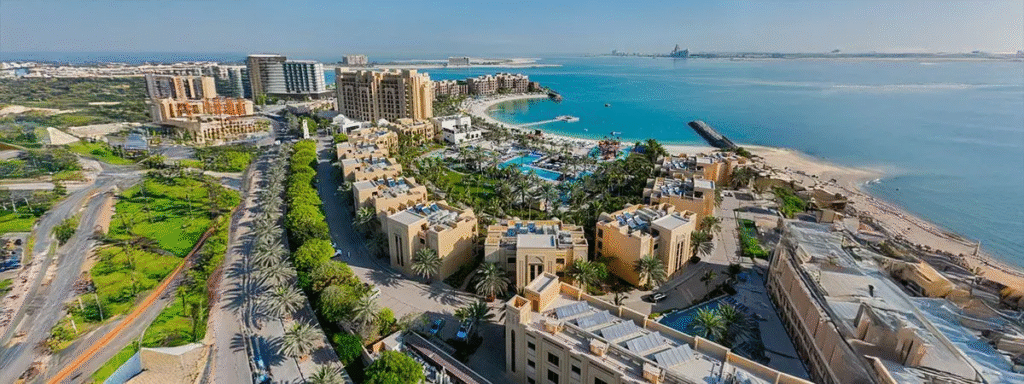
The 4% DLD fee, often split, applies to both: $24,000 for a $600,000 Bluewaters apartment or $8,000 for a $200,000 JVC unit. Gift transfers reduce DLD to 0.125%, saving $7,750-$193,750. Title deeds cost $136-$272, and broker fees (2%, or $4,000-$100,000) may be waived for off-plan projects. Mortgage registration (0.25% of the loan) and valuation fees ($680-$1,360) apply for financed deals. The 2025 Oqood system protects off-plan purchases, common in both areas.
Title deeds feel like your key to Dubai’s wealth.
Corporate Tax: A Common Consideration
The 9% corporate tax applies to businesses with profits over $102,110. A $600,000 property yielding $36,000-$54,000 faces $3,240-$4,860 in tax, reducing net income. QFZP status in DMCC avoids this, saving $6,120-$61,200, with setup costs of $2,000-$5,000. Small business relief waives tax for revenues under $816,000 until 2026. Individual ownership skips this tax, ideal for most buyers.
Corporate tax feels like a shared hurdle to sidestep.
New Tax Rules for 2025
The Domestic Minimum Top-up Tax (DMTT), effective January 1, 2025, imposes a 15% tax on multinationals with revenues over €750 million ($793 million). Individual investors are unaffected, and QFZP status avoids DMTT, saving $6,120-$61,200. Cabinet Decision No. 34 exempts QIFs with real estate income below 10%. A July 2025 policy allows depreciation deductions, saving $3,273-$9,000 annually for a $750,000 property revalued at $937,500.
New rules feel like a puzzle with profitable solutions.
Top Projects for 2025
Island: Palm Jumeirah – Atlantis The Royal Residences
($2.5 million-$10 million) 6-8% yields, 10-15% growth, luxury villas with high-net-worth appeal. Yields $80,000-$120,000 tax-free, saves $36,000-$48,000. Maintenance: $15,000-$25,000. Golden Visa eligible.
Palm Jumeirah feels like a prestigious coastal escape.
Island: Bluewaters – Bluewaters Residences
($600,000-$2 million) 7-10% yields, 7-10% growth, apartments with 75-80% occupancy. Yields $36,000-$54,000 tax-free, saves $13,320-$24,300. Maintenance: $8,000-$15,000. Vibrant and accessible.
Bluewaters feels like a lively waterfront gem.
Mainland: Dubai Hills – Emaar Hillside
($800,000-$2 million) 6-8% yields, 8-12% growth, villas with family appeal and metro access. Yields $48,000-$72,000 tax-free, saves $17,760-$32,400. Maintenance: $8,000-$15,000. Golden Visa eligible.
Dubai Hills feels like a serene urban retreat.
Mainland: JVC – Binghatti Heights
($200,000-$400,000) 7-10% yields, 6-9% growth, affordable apartments near Circle Mall. Yields $14,400-$21,600 tax-free, saves $5,328-$9,720. Maintenance: $3,000-$7,000. Budget-friendly.
JVC feels like a vibrant community hub.
Comparing Island vs Mainland
Price Range: Islands ($600,000-$10 million) are pricier than mainland ($200,000-$2 million).
Rental Yields: Both offer 6-10%; islands excel in short-term rentals (10-20% more, or $3,600-$40,000), mainland in long-term.
Price Appreciation: Islands (7-15%) outpace mainland (6-12%).
Lifestyle: Islands offer exclusivity and beaches; mainland provides affordability and connectivity.
Costs: Islands have higher maintenance ($8,000-$25,000) and DLD fees ($24,000-$400,000) than mainland ($3,000-$15,000; $8,000-$80,000).
ROI Verdict: Islands lead with 8-12% ROI for luxury and growth; mainland offers 7-10% for affordability and stability.
Choosing feels like balancing your dreams and budget.
Strategies to Maximize Returns
For individuals: Hold properties personally to avoid corporate taxes, saving $6,120-$61,200. Negotiate DLD fee splits, saving $4,000-$200,000. Use gift transfers to reduce DLD to 0.125%, saving $7,750-$193,750. Recover 5% VAT on developer fees via FTA ($500-$1,000). Leverage double taxation treaties with 130+ countries, saving $5,328-$80,000.
U.S. investors deduct depreciation ($3,636-$90,909), saving up to $31,818. For corporates: Secure QFZP status, keep QIF income below 10%, and claim depreciation deductions. Hire property managers ($3,000-$25,000 annually) and tax professionals ($1,000-$3,000) to avoid fines up to $136,125. Focus on short-term rentals for islands, long-term for mainland.
These strategies feel like a roadmap to your wealth.
Risks to Watch in 2025
A projected oversupply of 182,000 units by 2026 may slow mainland price growth, though island scarcity mitigates this. Choose trusted developers like Emaar or Nakheel and verify escrow compliance via the 2025 Oqood system. Non-compliance with VAT or DTCM rules risks fines up to $13,612, and corporate tax errors can cost $136,125. Indian investors must disclose properties in India’s Foreign Asset schedule to avoid $135,000 penalties. Currency fluctuations, like a 5% dirham shift, could impact returns.
Island or Mainland: Your Choice, Your Future
Dubai’s and mainland properties offer 6-10% yields, 6-15% growth, and tax-free savings of $2,000-$350,000 annually. Islands like Palm Jumeirah and Bluewaters deliver luxury and higher growth, while mainland areas like Dubai Hills and JVC offer affordability and connectivity. With Golden Visa perks and metro expansions, both are compelling. Weigh costs, lifestyle, and goals to pick your path in Dubai’s thriving 2025 market.
read more: Upcoming Gated Communities in Dubai Offering Privacy and Value



